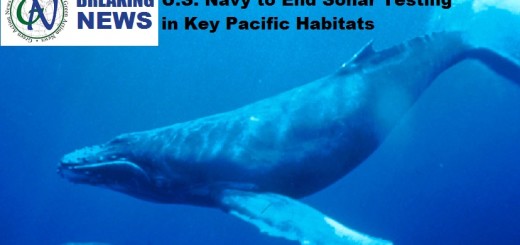South Africa’s Elephants At Risk as Minister Ignores International Opinion
Every 15 minutes an elephant is butchered for its tusks. That is 100 elephants every day. Nonetheless, the South African Minister of Water and Environment Affairs, Edna Molewa, recently said: “We did an ivory once-off sale and elephant poaching has not been a problem since.” The minister was addressing a crowd at a ceremony to sign an anti-rhino poaching agreement between South Africa and Mozambique in the Kruger National Park.
It is true that within the borders of South Africa elephant poaching is relatively rare as less than a dozen elephants are poached each year.
Poachers tend to target South Africa specifically for its rhino rather than elephants but the spectre of unprecedented ivory poaching is looming uncomfortably close to the country’s borders. South Africa’s direct neighbours, Mozambique and Zimbabwe, have of late experienced heavy casualties to their respective elephant populations.
A report published last month by animal advocacy group, Born Free USA, revealed that Mozambique, the co-signatory to the anti-poaching drive, has seen its elephant population halved since that once-off sale that Molewa believes halted poaching. Worse still, the report also states that “the ivory trade appears to be professionalising fast, with heavy involvement of police, border guard and political criminal networks”. The report goes on to warn that given the ease of rhino poaching in South Africa fears of serious, professionalised ivory poaching in the Kruger Park are well founded.
Conservation experts believe that it is only a matter of time before South Africa will experience a spill over from Zimbabwe and Mozambique. Derek Joubert, famed National Geographic wildlife filmmaker believes “We have an avalanche coming our way” and that “we can expect poaching to increase”.
Ever since the Convention on International Trade in Endangered Species (CITES) approved the 2008 once-off sale of ivory poaching of elephants escalated alarmingly.
The previous epidemic of elephant poaching to supply the ivory market was in the late 1980s but was brought to a halt in 1989 when CITES banned the worldwide trade in ivory products. Poaching levels then dropped throughout the 1990s; but according to a United Nations report, poaching “jumped dramatically from 2009”.
Experts believe the upturn was directly related to the fact that in July 2008 China was given permission, for the first time, to take part in a one-off legal sale of 108 tons of ivory from four southern African countries whose elephant populations were regarded at the time as relatively healthy and well-managed.Tanzania, has seen the elephant population in its vast Selous Game Reserve that borders Mozambique drop from 75,000 elephants in 2008 to less than 13,000 in 2013 and Central Africa has seen a 65% decline in its elephant population.
With ivory poaching reaching such horrifying levels since that once-off sale the world has collectively scrambled to deal with the crisis. Although initially slow in response, most countries, even non-range or consumer states,have retaliated with increasing urgency. Almost all of them recognise that it was the 2008 once-off trade that sparked the crisis. A report by the Environmental Investigation Agency found that ivory, which was bought for an average of US$157 per kilo from the Southern African states in 2008, has increased tenfold since then.
Will Travers at Born Free believes the answer is to close down the legal ivory market.
“Get rid of the remains of the legal stockpile that they have been drip-feeding into the market, thereby sustaining the trade,” he said and many agree.
The USA, China, Philippines, Ghana, Chad, France and Belgium have all held public destructions of their ivory stockpiles to show their deep commitment against any trade in ivory. Conferences have been held on three continents, laws have been introduced, ivory banned out-right in the USA, and commitments from countries, like China and Tanzania where the problem is at its worse, have been issued. In February this year high-level representatives from 50 key elephant range, consumer and donor states agreed to a 10 year moratorium on ivory trading.
Yet South Africa seems blind to the approaching spectre. The country was glaringly absent from the London Conference and now stands alone in its pro-trade view toward trade in rhino horn and ivory.
Molewa may be correct in her assessment of the elephant situation as it stands in South Africa, but her explanation for why this is so is not shared internationally.
The country remains as one of the last the last safe havens for elephants, but then, not long ago it was a safe place for rhinos too. Given the empirical link between the 2008 sale and the increase in elephant poaching as well as the current situation of rhino poaching in the Kruger Park, the minister may need to rethink her pro-trade arguments as a the panacea for rhino and elephant poaching.




